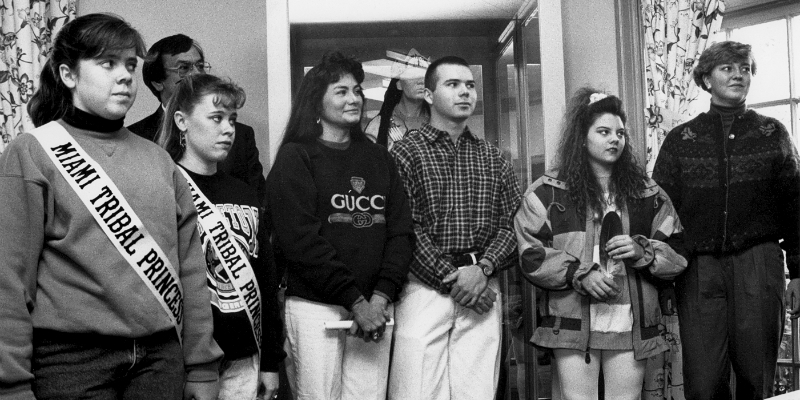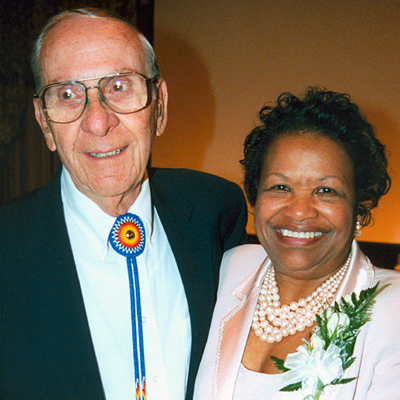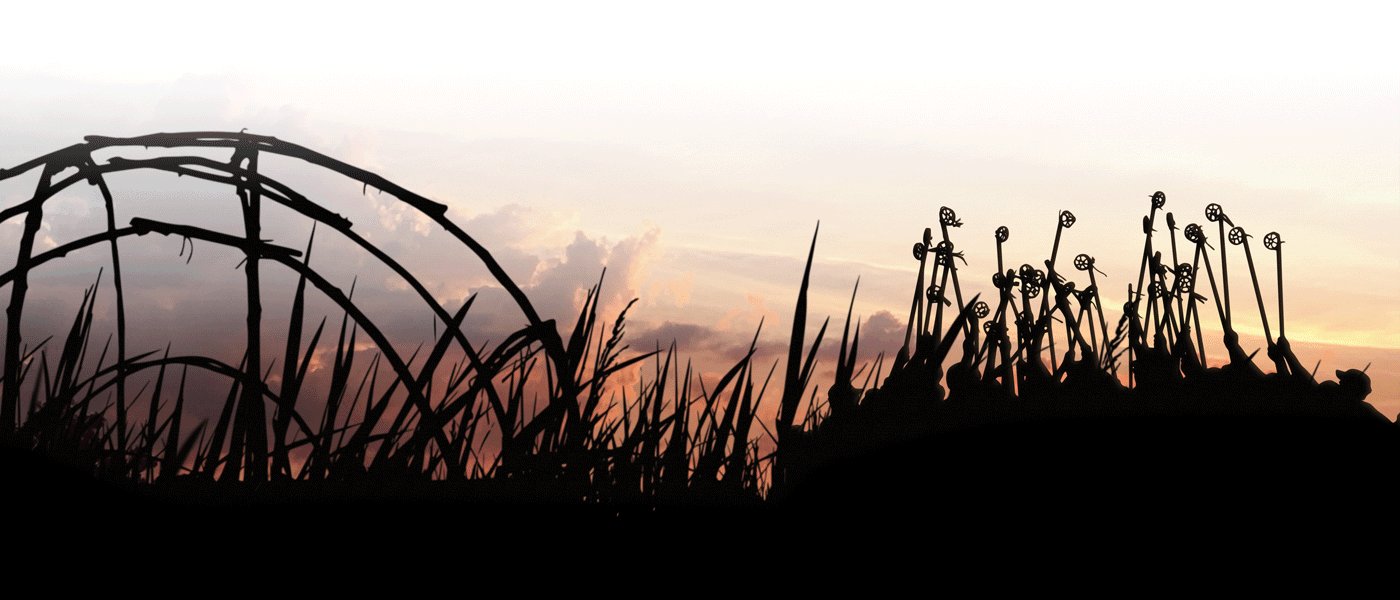
History
2000
2022
2021
Daryl Baldwin, Myaamia Center Executive Director, was nominated by President Joe Biden to serve on the National Council on the Humanities.
Chief Douglas Lankford receives an Honorary Doctorate of Humane Letters from Miami University at December commencement.
Miami University hosts a “Day of Remembrance” event to commemorate the 175th anniversary of the removal of Myaamia people from their homelands.
100th Myaamia student graduates from Miami University.
2017
May 13 – Daryl Baldwin, Director of the Myaamia Center, gives the keynote commencement address and receives an Honorary Doctorate of Humane Letters from Miami University at commencement.
October 21 – Miami University President Gregory Crawford and Miami Tribe Chief Douglas Lankford sign a new Memorandum of Agreement, launching the Miami Heritage Logo and Collection.

2016
2015
Removal of unlicensed Redskins products sold at retail outlets.
2013
The Myaamia Project transitioned into the Myaamia Center.
2008
Miami University and the Miami Tribe sign a Memorandum of Agreement, officially recognizing the Myaamia Project and lists details connected to its funding, operations, and intellectual property.
The Miami University Art Museum hosts a semester-long exhibit about the Miami Tribe.
2006
Miami University and the Miami Tribe sign a Memorandum of Understanding to continue to engage in future educational initiatives together.
2005
Chief Floyd Leonard receives an Honorary Doctorate of Humane Letters from Miami University at May commencement.
2004
The first Myaamiaki Conference on Miami Tribe Scholarship is held.
2003
Myaamia Heritage classes begin for enrolled Myaamia students.

2001
1900
1997-1998
Out of respect for the Miami Tribe's request, Miami University changes its mascot name from Redskins to RedHawks.
1996
The Miami Tribe sends a resolution to Miami University that states: “the Miami Tribe of Oklahoma can no longer support the use of the nickname Redskins and suggest that the Board of Trustees discontinue the use of Redskins and other Indian related names...”
1991
In August, 1991, three Miami Tribe members became the first Miami Tribe students to enroll at Miami University.
Since then, many Myaamia students have chosen to receive their college education at the University bearing their Tribe's name. Over the years, the number of enrolled Myaamia students each semester has steadily grown and now commonly reaches 30 or more.

 The roots of many of the current educational activities stem from a visit to Miami, Oklahoma in May of 1991 by Dr. Myrtis Powell (VP for Student Affairs 1989-2002).
The roots of many of the current educational activities stem from a visit to Miami, Oklahoma in May of 1991 by Dr. Myrtis Powell (VP for Student Affairs 1989-2002).
During visit discussions, the Tribe expressed a wish to strengthen the relationship with Miami University. Together a plan was established to increase education for Miami University students and to provide opportunities for Myaamia students to attend Miami University.
1989-1990
Eventually, Dr. Myrtis Powell (Miami University Vice President for Student Affairs, 1989-2002) helped establish the first parameters for the financial assistance available to eligible Miami Tribe members. In a letter to Chief Floyd Leonard in September 1990, Dr. Powell promised to "provide a tuition waiver for any member of the Miami Tribe who meets program requirements and is accepted for admission to the University." This tuition waiver was eventually renamed and included in the Myaamia Heritage Award Program.
1978-1979
In 1978-79, a Wampanoag Tribe member from Massachusetts enrolled at Miami and became the first recipient of the American Heritage Scholarship. By the late 1980s, additional eligible students were receiving $1,000 awards, but no record is available of exactly who those students were or what, if any, tribal affiliation they had.
1973-1974
Fundraising efforts for a scholarship for Myaamia students began early in the relationship between the Miami Tribe of Oklahoma (MTO) and Miami University. Initially called the American Heritage Scholarship during the 1973-74 academic year, the local Church Women United helped fund this scholarship. By February 1974 a full description of the American Heritage Scholarship existed, seeking to recruit Native American students and, if possible, award the scholarship to a Miami Indian.
1972
Miami Tribe Chief Forest Olds visits Miami University unexpectedly, forging the first connection. Miami University sends a resolution to the Tribe asking for support to use Redskins as an athletic mascot.
1800
1846
Many Myaamia people are forcibly removed from their Indiana homelands to lands that later become Kansas. They were removed a second time to lands in Indian Territory, which later became the state of Oklahoma.
1809
Miami University is founded.
1803
Ohio becomes the 17th state in the union.
1700
1795
Several tribes, including the Miami, sign the Treaty of Greenville. This cedes much of what becomes Southwest Ohio to the U.S. government and opens the area to settlement.
